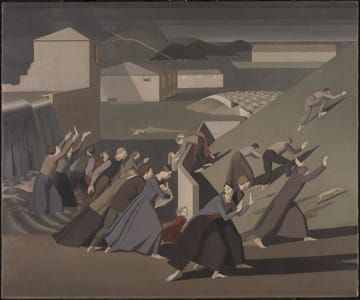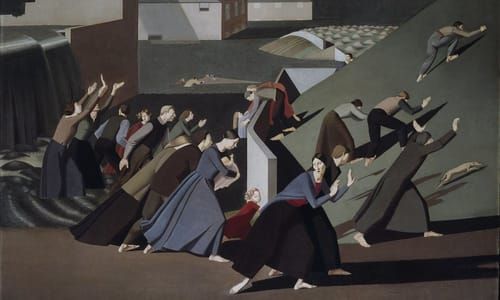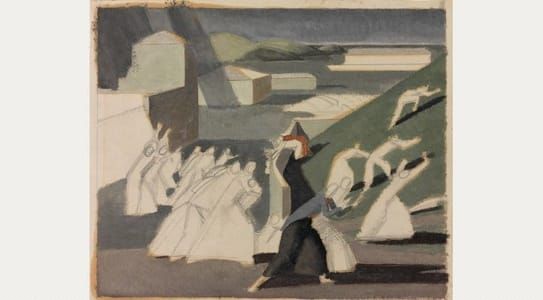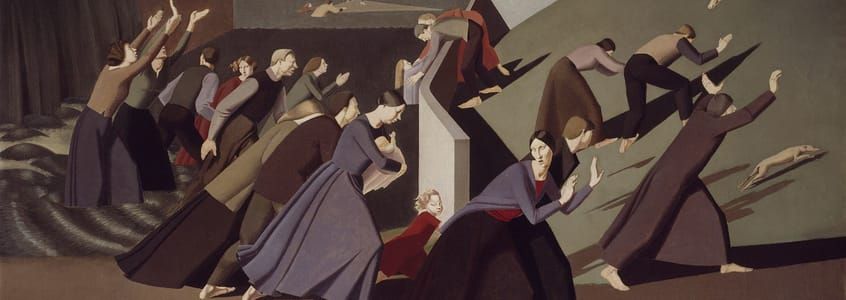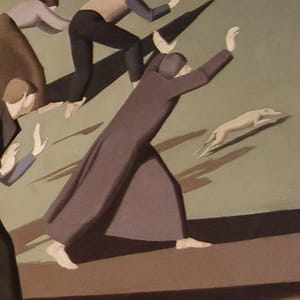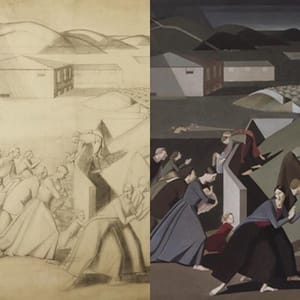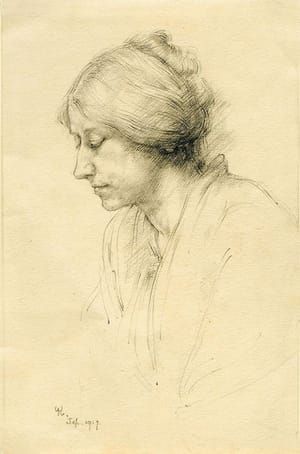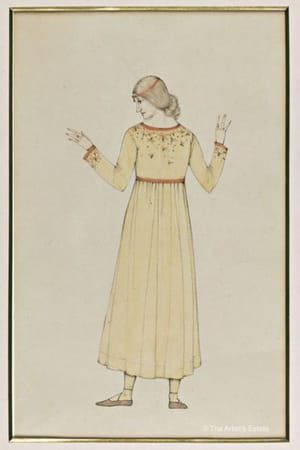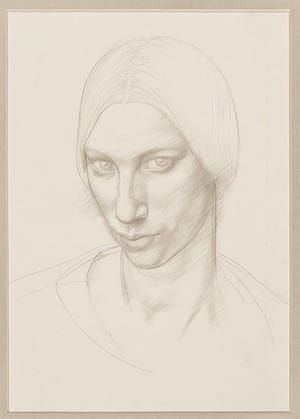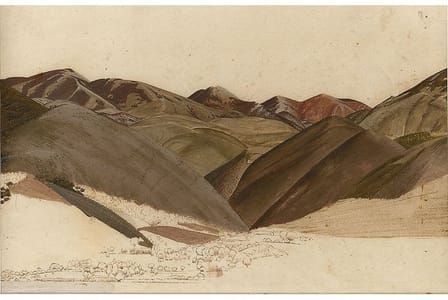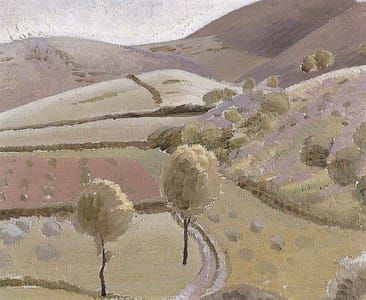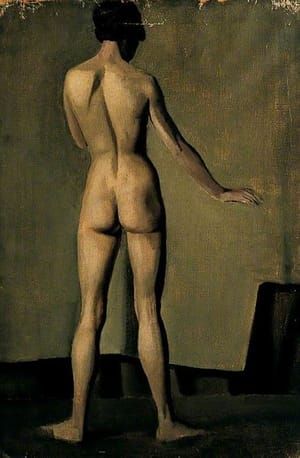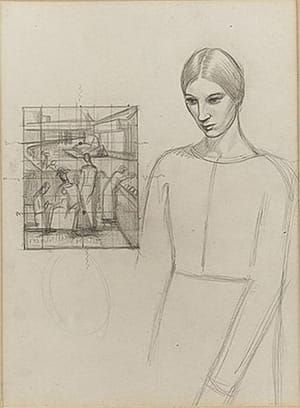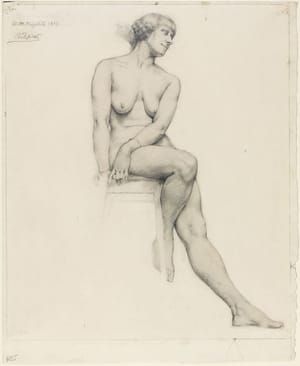
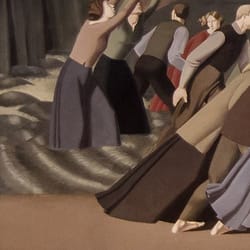
The Deluge, 1910
Winifred Knights
‘A kind of hectic cinema in the long shadows and violent geometry’: Winifred Knights’s The Deluge (1920), for which she won the Prix de Rome.... At 21, she became the first woman to win the Prix de Rome for her painting The Deluge. (https://www.theguardian.com/artanddesign/2016/jun/12/winifred-knights-mary-heilmann-looking-at-pictures-dulwich-whitechapel-review)
This apocalyptic painting was produced by Winifred Knights as a competition entry for the final of the 1920 Prix de Rome scholarship in Decorative Painting. From an initial selection of seventeen young artists, Knights was chosen to go forward to the final round, along with Leon Underwood (1890-1975), James Wilkie and Arthur Outlaw, all of whom were also students at the Slade School of Art in London, where Knights studied intermittently between October 1915 and July 1920. The theme of 'The Deluge' was designated for the final prize, with eight weeks allowed for the submission of 'a painting in oil or tempera and a cartoon' (quoted in Alan Powers, 'Decorative Painting in the early Twentieth Century - a Context for Winifred Knights, in Winifred Knights 1899-1947, p.17). The size of the painting, 5ft by 6ft, was also set in advance by the judges. Knights began working on the canvas on 5 July 1920. Despite suffering from tonsillitis and eye problems over the summer, and submitting her painting partly unfinished, she won the award, taking up the three-year scholarship at the British School at Rome in November.
While Knights initially conceived the Biblical Flood scene with a frieze of figures and animals calmly entering Noah's ark in the foreground and placid, horizontal tracts of landscape in the distance, the final design was altogether more dramatic. Frenzied figures flee from the engulfing waters towards high ground, while the ark, windowless and silent, glides away in the distance. Sharp diagonals create a sense of dynamic movement across the canvas reminiscent of the Vorticist experiments of David Bomberg (1890-1957) and Edward Wadsworth (1889-1949) before the First World War (1914-18). While the other finalists depicted classical, semi-nude figures (see Winifred Knights 1899-1947, p.16), Knights worked in a more clearly modernist idiom, preferring stylised, clothed figures and crisply defined shadows. Viewers were struck by the contemporary rendering of the subject. When the painting was displayed in an exhibition of the competition entries at London's Royal Academy in February 1921, one commentator for The Daily Graphic described how 'the ark suggests the modern concrete buildings, and the figures are those of present-day men and women. Critics declare the painter a genius' (The Daily Graphic, 8 February, quoted in Judith Collins, 'Winifred Knights 1899-1947', in Winifred Knights 1899-1947, p.9). (http://www.tate.org.uk/art/artworks/knights-the-deluge-t05532/text-summary)
Uploaded on Aug 22, 2016 by Suzan Hamer
Winifred Knights
artistArthur
Wait what?
